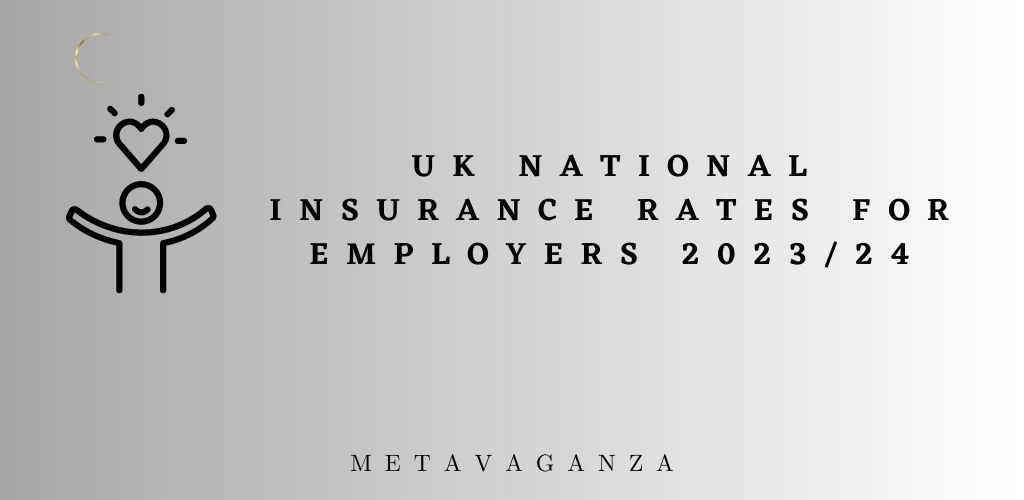Insurance Marketplace : National Insurance Rates 2023/24 – As a UK employer, you’re required to pay National Insurance contributions on behalf of your employees. It’s important to stay up to date with the latest rates and changes to ensure you’re compliant with the law.
What is National Insurance?
National Insurance (NI) is a social security system in the UK that provides benefits to individuals who are sick, unemployed, retired, or have a disability. NI is funded by contributions from employees, employers, and self-employed individuals.
Who Pays National Insurance?
Employers are required to pay NI contributions on behalf of their employees. The amount of NI you pay depends on your employee’s earnings and their National Insurance category.
National Insurance Categories
There are currently six categories of National Insurance contributions for employees in the UK. Each category determines the amount of contributions an employee is required to make and the benefits they’re entitled to receive. The categories are:
Related Article : Tahlil Apk
Category 1: Employees earning above the Lower Earnings Limit (LEL) and below the Primary Threshold (PT)
Category 2: Self-employed individuals who earn a profit above a set amount
Category 3: Voluntary contributions for individuals who want to top up their NI record
Category 4: Self-employed individuals who earn a profit above a higher set amount
Category A: Employees earning above the PT and up to the Upper Earnings Limit (UEL)
Category B: Employees earning above the UEL
Changes to National Insurance Rates for Employers in 2023/24
The UK government has announced changes to the National Insurance rates for employers that will take effect from 6 April 2023. The changes are as follows:
Class 1 National Insurance
Class 1 National Insurance contributions are paid by employers and employees. The employer’s contribution is based on the employee’s earnings and their National Insurance category. The employee’s contribution is based on their earnings and the National Insurance category.
For the tax year 2023/24, the rates for Class 1 National Insurance contributions are:
Lower Earnings Limit (LEL) – £120 per week
Primary Threshold (PT) – £190 per week
Upper Earnings Limit (UEL) – £1,058 per week
Employee’s contribution rate: 12%
Employer’s contribution rate: 13.8%
Class 1A and 1B National Insurance
Class 1A and 1B National Insurance contributions are paid by employers on benefits in kind (BIK) and expenses payments. Class 1A contributions are paid on benefits provided to employees, while Class 1B contributions are paid on PAYE Settlement Agreements (PSAs).
For the tax year 2023/24, the rates for Class 1A and 1B National Insurance contributions are:
Employer’s contribution rate: 13.8%
Class 2 and 4 National Insurance
Class 2 National Insurance contributions are paid by self-employed individuals who earn a profit above the Small Profits Threshold. Class 4 National Insurance contributions are also paid by self-employed individuals who earn a profit above the Lower Profits Limit.
For the tax year 2023/24, the rates for Class 2 and 4 National Insurance contributions are:
Class 2 National Insurance: £3.25 per week
Class 4 National Insurance:
Lower Profits Limit (LPL) – £10,000 per year
Upper Profits Limit (UPL) – £101,000 per year
Rate between LPL and UPL – 9%
Rate above UPL – 2%
How to Calculate National Insurance Contributions
To calculate the National Insurance contributions for your employees, you’ll need to know their earnings and their National Insurance category. You can use HM Revenue & Customs’ (HMRC) calculator to help you work out how much you need to pay.
Why It’s Important to Stay Compliant
It’s important to stay compliant with the National Insurance regulations as failing to pay the correct amount of contributions can result in penalties, interest charges, and legal action. In addition, your employees may not receive the benefits they’re entitled to if you fail to make the correct contributions.
Conclusion
In summary, as an employer in the UK, it’s important to stay up to date with the National Insurance rates and changes. The rates for Class 1, 2, and 4 National Insurance contributions are changing for the tax year 2023/24, so make sure you’re aware of the new rates and calculate your contributions correctly to stay compliant with the law.
FAQs
1. Do I need to pay National Insurance contributions for all my employees?
Yes, you’re required to pay National Insurance contributions for all employees who earn above the LEL.
2. Can I use a payroll software to calculate National Insurance contributions?
Yes, most payroll software can help you calculate the National Insurance contributions for your employees.
3. What happens if I don’t pay the correct amount of National Insurance contributions?
You may face penalties, interest charges, and legal action if you fail to pay the correct amount of contributions.
4. Are there any exemptions from National Insurance contributions?
Yes, some employees may be exempt from National Insurance contributions, such as those under the age of 16.
5. Where can I find more information about National Insurance contributions?
You can find more information on the HMRC website or speak to a tax professional for advice.



[…] Related Article : UK National Insurance Rates for Employers 2023/24 […]